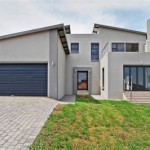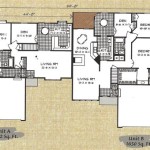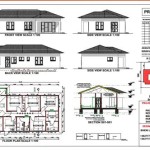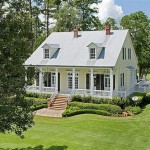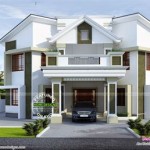Tiny Cottage Style House Plans: Embracing Cozy and Efficient Living
The allure of simpler living has driven the rising popularity of tiny homes. Among the various architectural styles embraced by the tiny house movement, the cottage style stands out for its charm and practicality. Tiny cottage style house plans offer a blend of aesthetic appeal and efficient use of space, creating homes that are both comfortable and economical.
Key Features of Tiny Cottage House Plans:
- Compact Footprints
- Emphasis on Natural Light
- Traditional Architectural Details
- Open-Concept Layouts
- Outdoor Living Spaces
Cottage-style homes, traditionally smaller than typical residences, adapt well to the tiny house concept. These plans prioritize efficient layouts that maximize every square foot. Design elements like built-in storage, multifunctional furniture, and lofted sleeping areas contribute to the functionality of these compact homes.
Maximizing Space in Tiny Cottage Designs:
- Built-in Storage Solutions
- Multifunctional Furniture
- Lofted Sleeping Areas
- Vertical Space Utilization
Natural light plays a vital role in creating a sense of spaciousness in tiny homes. Large windows and strategically placed skylights are common features of tiny cottage house plans. These elements not only brighten the interior but also foster a connection with the outdoors, enhancing the overall living experience.
Enhancing Natural Light in Tiny Cottages:
- Large Windows
- Skylights
- Light-Colored Interior Finishes
- Open Floor Plans
Despite their compact size, tiny cottage house plans often incorporate traditional architectural details that lend a sense of character and charm. Features like dormer windows, decorative trim, and pitched roofs evoke the classic cottage aesthetic, creating a visually appealing and inviting exterior.
Traditional Cottage Architectural Elements:
- Dormer Windows
- Decorative Trim
- Pitched Roofs
- Stone or Brick Accents
- Covered Porches
Open-concept layouts are a popular choice in tiny cottage designs. By minimizing interior walls, these plans create a sense of spaciousness and flow, allowing natural light to penetrate deeper into the home. This design strategy also promotes a sense of community within the compact living space.
Benefits of Open-Concept Layouts:
- Enhanced Natural Light Penetration
- Improved Air Circulation
- Sense of Spaciousness
- Flexibility in Furniture Arrangement
Extending the living space outdoors is a key consideration in many tiny cottage plans. Porches, decks, and patios provide additional areas for relaxation, dining, and entertaining. These outdoor spaces create a seamless transition between the indoor and outdoor environments, expanding the functional footprint of the home.
Integrating Outdoor Living Spaces:
- Covered Porches
- Decks
- Patios
- Outdoor Kitchens or Dining Areas
Choosing sustainable materials and construction methods is a growing trend in tiny house construction. Tiny cottage plans can incorporate eco-friendly features such as solar panels, rainwater harvesting systems, and composting toilets. These elements contribute to a reduced environmental impact and lower operating costs.
Sustainable Building Practices for Tiny Cottages:
- Solar Panels
- Rainwater Harvesting
- Composting Toilets
- Recycled or Reclaimed Materials
- High-Performance Insulation
The versatility of tiny cottage house plans extends to their adaptability to various locations. Whether situated in a rural setting, a suburban backyard, or a designated tiny house community, these homes offer a flexible housing solution that can cater to a variety of lifestyles and preferences.
Placement Options for Tiny Cottages:
- Rural Properties
- Suburban Backyards (Accessory Dwelling Units)
- Tiny House Communities
- Coastal or Mountain Locations
Careful planning and consideration of lifestyle needs are essential when selecting a tiny cottage house plan. Factors such as the number of occupants, desired amenities, and local building codes should be taken into account to ensure the chosen plan aligns with individual requirements and regulations.
Considerations When Choosing a Tiny Cottage Plan:
- Number of Occupants
- Desired Amenities (e.g., kitchen size, bathroom features)
- Local Building Codes and Zoning Regulations
- Budget and Financing Options
- Long-Term Living Needs

Cottage Style House Plan 1 Beds Baths 569 Sq Ft 45 334 Plans

Cottage Style House Plan 2 Beds Baths 891 Sq Ft 497 23 Plans Barn

Plan Small Cottage Homes 2 Bedroom Single Story With Screened Porch Davidreed Co In 2024 Sims House Plans Blueprints

Diy Tiny House Plans 50 Vermont Cottage Option A 16x20 Shabby Chic Style Garden Dc Metro By Jamaica Inc Houzz

Tiny House Plans To Kickstart Your Home Dream Archute

Modern Farmhouse Cabin Plan Pacific Crest Tiny House Floor Plans Cottage
:max_bytes(150000):strip_icc()/SL-988_FCR-aee93c049aa349d5a75e38ed2640bd24.jpg?strip=all)
26 Tiny House Plans That Prove Bigger Isn T Always Better

Small 2 Story 3 Bedroom Southern Cottage Style House Plan

18 Tiny House Floor Plans 2 Bedrooms Loft And More Homes

Small Bungalow Cottage House Plan With Porches And Photos


